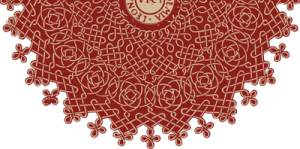Where are Literary and Cultural Studies researchers active today?
Research conducted today by scholars trained in literary studies has branched out widely from its original objects of study. No longer restricted to studying manuscripts, printed books or other language based genres in a philological mode, LCS researchers are now concerned rather with four essential conceptual elements, using them to describe, analyse and evaluate what may broadly be called the symbolic dimension of humanity’s relationship with material reality. The four elements are textuality, rhetoricity, fictionality and historicity. These concepts both represent crucial structures and processes at work in cultural objects and at the same time offer key techniques for understanding them. Working often together or in comparative engagement, they indicate ways in which all knowledge, all social activity, can be read.
Textuality:
A text is a weave of meanings. The concept of ‘textuality’ – what Roland Barthes1 describes as a ‘galaxy of signifiers’ or Clifford Geertz2 identifies as the intricate ‘thickness’ of the structures that constitute cultures – represents the complexity of all cultural objects and activities. Whether it is an aesthetic construction or a social process, any cultural object can be understood as an artefact. Textuality may or may not presume a maker; the focus is on the formal shape of the thing. LCS techniques that describe, explain and contextualise such structures are valuable tools for understanding and analysing any social entity, from a law to a bodily gesture.
Fictionality:
In cultural meaning there is no fixed ground of materiality; yet the referentiality of many artefacts supposes a difference between the real and unreal that is best described by the term ‘fictionality’. As its Latin root suggests, a fiction is a thing fashioned; like ‘textuality’, it may well assume a maker, but the identification of fictionality does not necessarily focus on authorship. Like other virtual forms, fictionality may be rule-bound in the sense that it presupposes rules of artifice, but it is not bounded by natural laws. A fiction is not a lie, but its truth-claims are not testable. To study the fictionality of any object is to study how kinds of truth-effect are artfully achieved.
Rhetoricity:
Assuming language (or similar structures) to have probable purposes and undoubted effects is ‘rhetoricity’. The concept is derived from the art of persuasion through speech – rhetoric – as developed and practised in Greek and Roman antiquity, but it may be extended to any formal or informal techniques that persuade or manipulate. Metaphors and other figures of speech pervade every level of discourse, and they are never innocent: why, for example, do we still speak of ‘hard’ and ‘soft’ sciences? To be able to identify rhetoricity not only as a tool of specialised forms of discourse but as a phenomenon that invades all kinds of communication is one of the most important facets of Cultural Literacy.
Historicity:
All human artefacts and practices have extension in time, whether or not they have extension in space. Their freight of past is essential to their meaning. While the age of the ‘grand narratives’3 is over, the historicity of things relates to their formation as ‘little narratives’, the quality of being a tale told and heard. Historicity has two faces: it relates both to the synchronous historical context of a socio-cultural phenomenon and to its position in the diachronic processes of change of which it is a part. The study of all these aspects of historicity can make a direct contribution to the process of cultural problem-solving.
1 Roland Barthes, S/Z, (Paris: Éditions du Seuil, 1970).
2 Clifford Geertz, The Interpretation of Cultures (New York: Basic Books, 1973).
3 Jean-François Lyotard, La condition postmoderne (Paris: Minuit, 1979).
Source: Science Policy Briefing, 2013.

